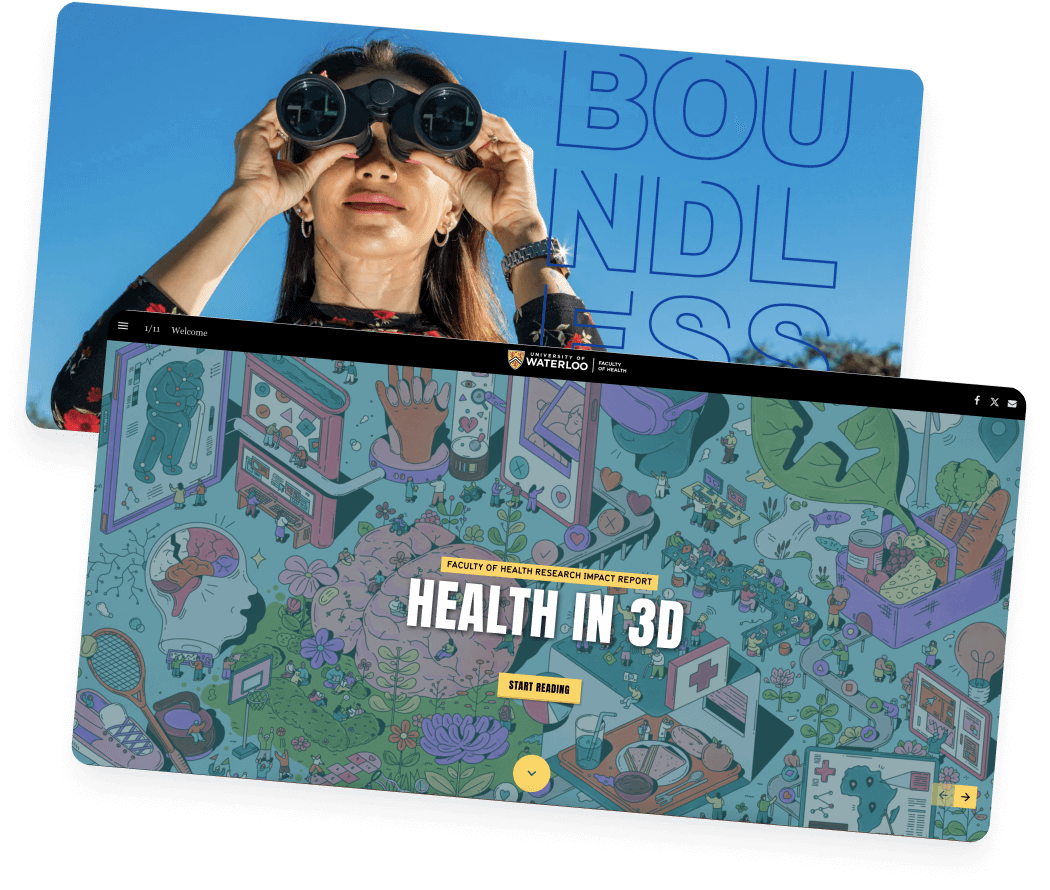Brochures have been a tried-and-true tool in the arsenal of higher education marketing teams for years. These versatile collateral pieces convey an institution's essence to prospective students, alumni, and faculty. However, the modern era and the modern student demand a digital edge.
In this blog, we'll dive deep into the importance of brochures in higher education marketing, their purpose, the benefits of leveraging a digital brochure, and how to create effective education brochures.
Importance of brochures in Higher Education marketing
While recruitment materials and academic research papers have historically been essential for universities to attract prospective students and engage with the academic community, adapting to evolving reading habits is crucial.
Traditional approaches like direct mail and printed materials are no longer the primary content sources in our modern digital era. As the demand for digital content rises, organizations increasingly turn to digital content.
In the fast-evolving landscape of higher education marketing, digital brochures offer a timeless appeal. They serve as informative guides that provide an in-depth view of an educational institution's offerings. Brochures act as ambassadors, speaking directly to students, alumni, and faculty. They offer a glimpse of campus life, academic programs, and the overall culture of the institution.
Brochures find their place across various touchpoints in the higher education journey:
- Campus tours and open houses: Brochures are handy companions for prospective students during campus tours and open houses. They offer an organized overview of the institution's facilities and academic offerings.
- Recruitment and outreach: For marketing teams, brochures are invaluable tools for recruitment and outreach efforts. They help communicate the institution's unique selling points to a diverse audience.
- Alumni engagement: Brochures are not only for attracting new students but also for maintaining connections with alumni. They can highlight the accomplishments of graduates and provide information about alumni events.
Printed vs. digital brochures
Your students and alumni are diverse, each with unique behaviors and information consumption habits. How one student consumes content can differ significantly from how another consumes content. Some prefer tangible printed materials, while others rely on the Internet for course content. Of course, printed brochures have a place in higher education marketing. But, leveraging an interactive content format helps your designs reach broader communities of students, alumni, and faculty.
When to use digital brochures for higher education
Interactive program catalogs:
Higher education institutions can create interactive digital brochures to showcase their academic programs, courses, and degrees. These brochures can include engaging multimedia elements, such as videos, animations, and infographics, to provide a dynamic overview of the offerings. Prospective students can explore detailed program information, admission requirements, faculty profiles, and student testimonials, all in one convenient digital format. These brochures enable marketing teams to keep program information up to date easily and offer a more immersive and interactive experience, helping to attract and engage potential students.
Discover: 4 Trends Shaping the Future of Higher Education Marketing and Design
Campus tours and virtual open days:
Digital brochures can serve as a virtual tour guide for prospective students who cannot visit the campus in person. These brochures can feature 360-degree photos, interactive maps, and videos to provide a realistic sense of the campus environment.
Marketing teams can use brochures to promote virtual open days and give attendees essential information about the event schedule, session details, and registration links. Virtual tours and open-day brochures help institutions reach a broader audience and engage with potential students from different geographical locations.
Student recruitment and outreach:
Digital brochures can be customized to target specific student segments or demographics. Marketing teams can create brochures that cater to the unique interests and needs of various student groups, such as international students, transfer students, or those interested in specific fields of study.
Read: The 2022 Complete Guide to Higher Education Marketing.
How to create effective education brochures in 5 steps
1. Clearly outline your goals
The journey to crafting an impactful education brochure begins with clearly defining your objectives. What do you intend to achieve with this brochure? Is it about attracting prospective students, engaging alumni, or highlighting academic programs? Your objectives will serve as the guiding star throughout the creation process.
Whether driving more admissions, boosting alumni participation, or elevating brand awareness, defining your goals is the compass that will navigate your content and design decisions.
2. Know your audience: Tailor content to resonate
Understanding your audience is paramount. Your brochure should be a conversation, not a monologue. Dive deep into your target audience's needs, interests, and expectations. What are their pain points? What motivates them? What information do they seek?
Tailoring your content to resonate with your audience is the key to capturing their attention. Craft content that answers their questions, addresses their concerns and tells a story that aligns with their aspirations.
3. Create compelling content: Engage, visualize, interact
Compelling content is the heart and soul of any effective brochure. Craft narratives that engage and immerse your readers. Share success stories, testimonials, and real-life experiences that resonate with your audience. Use eye-catching visuals—stunning photography, captivating illustrations, and infographics—to breathe life into your content. Infuse interactivity where appropriate, whether clickable links, videos, or interactive elements, allows your audience to dive deeper.
This is where you can leverage the brochure format to boost engagement. Be creative and daring with your storytelling, ensuring it captivates and compels your readers.
4. Design thoughtfully: Aesthetics matter
Aesthetic design is not just about making your brochure look pretty—it's about enhancing the user experience. A thoughtful design complements your content, quickly guiding readers through the brochure. Keep the layout clean and organized, ensuring the visual elements harmonize with the text. Choose fonts and color schemes that reflect your institution's brand identity.
The design should create a seamless and visually appealing journey that allows readers to absorb information effortlessly. Visual consistency and a user-friendly layout will elevate your brochure's overall impact.
5. Test and iterate: Continuous improvement
The journey doesn't end with the creation of your brochure. Testing and iteration are vital steps to ensure your brochure's effectiveness. Gather feedback from your audience and stakeholders. What resonates with them, and what needs improvement? Is the brochure achieving its defined objectives?
Are there technical issues to address in digital formats? Be open to constructive criticism and willing to refine your brochures based on the insights you gain. Continuous improvement is the key to ensuring that your brochures remain effective and relevant.
Looking for inspiration? Check out creative brochure examples for students.
Discover: 4 Trends Shaping the Future of Higher Education Marketing and Design
Final words
Brochures remain a vital component of higher education marketing strategies. They bridge the gap between the institution and its stakeholders, offering a window into academia. Whether in print or digital form, brochures hold the power to engage, inform, and inspire. Leveraging both can empower higher education marketing teams to meet their student's and alumni’s needs.
By understanding their significance and effectively utilizing them correctly, higher education institutions and universities can connect with their students and alumni in meaningful ways, contributing to the growth and success of their academic communities.



